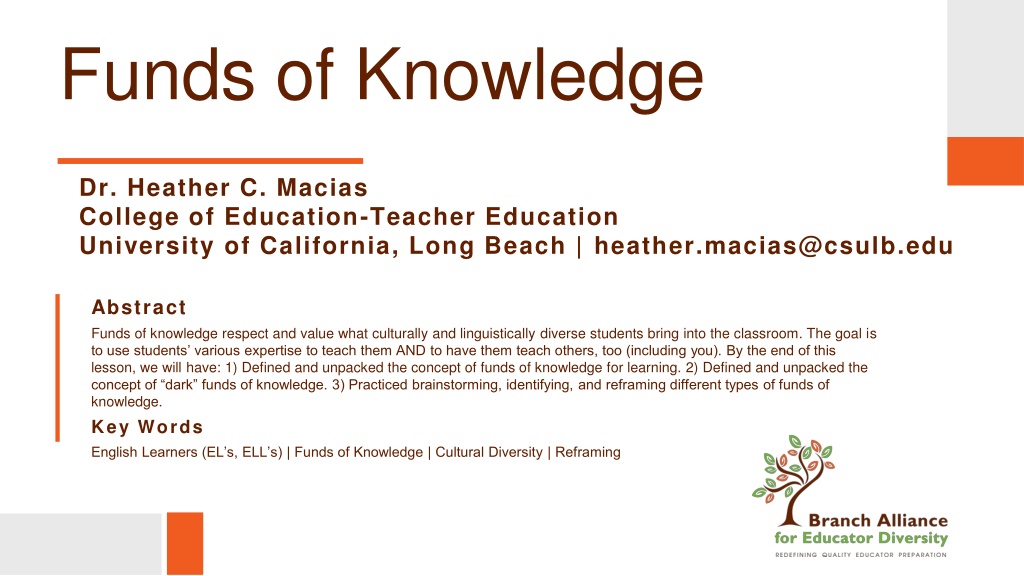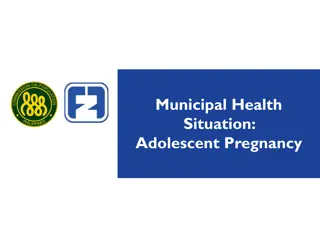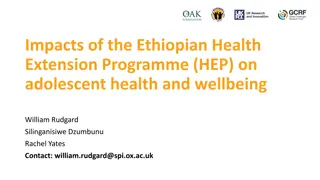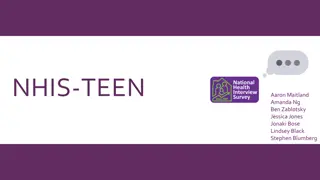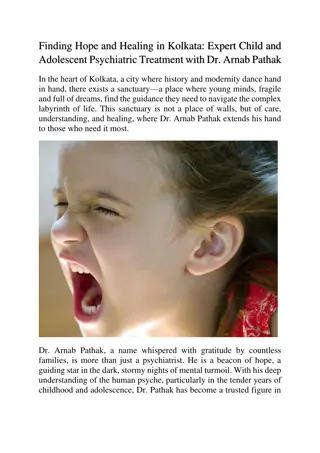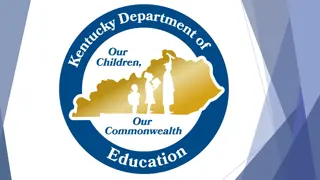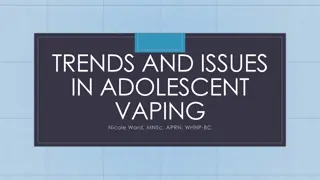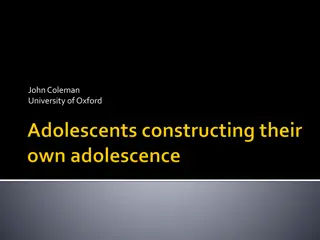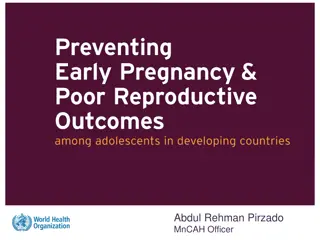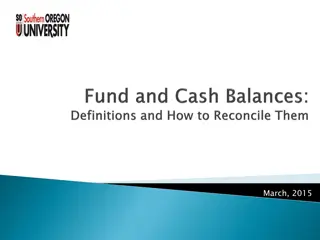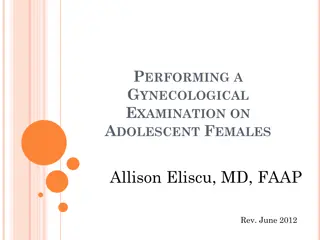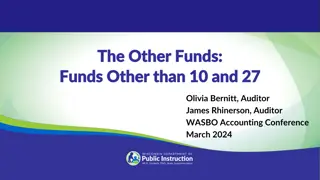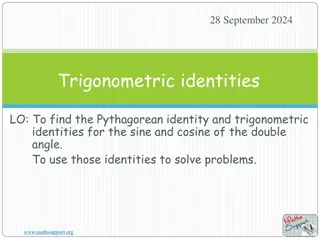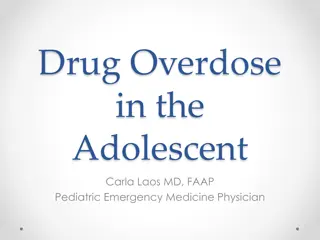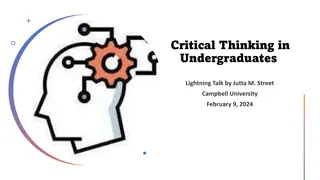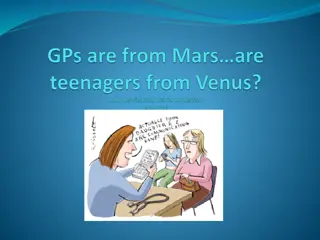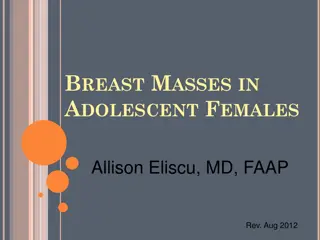Understanding Funds of Knowledge and Adolescent Identities in Education
This lesson explores the concept of funds of knowledge, emphasizing the value of culturally diverse students' expertise in the educational process. It delves into identifying different types of knowledge students bring and reframing misconceptions. Additionally, it examines adolescent identities, highlighting the challenges and diversity within youth populations.
Download Presentation

Please find below an Image/Link to download the presentation.
The content on the website is provided AS IS for your information and personal use only. It may not be sold, licensed, or shared on other websites without obtaining consent from the author. Download presentation by click this link. If you encounter any issues during the download, it is possible that the publisher has removed the file from their server.
E N D
Presentation Transcript
Funds of Knowledge Dr. Heather C. Macias College of Education-Teacher Education University of California, Long Beach | heather.macias@csulb.edu Abstract Funds of knowledge respect and value what culturally and linguistically diverse students bring into the classroom. The goal is to use students various expertise to teach them AND to have them teach others, too (including you). By the end of this lesson, we will have: 1) Defined and unpacked the concept of funds of knowledge for learning. 2) Defined and unpacked the concept of dark funds of knowledge. 3) Practiced brainstorming, identifying, and reframing different types of funds of knowledge. Key Words English Learners (EL s, ELL s) | Funds of Knowledge | Cultural Diversity | Reframing
Funds of Knowledge Dr. Heather C. Macias College of Education - Teacher Education California State University, Long Beach
Learning Objectives Learning Objective(s): By the end of this lesson, we will have . Defined and unpacked the concept of funds of knowledge for learning. Defined and unpacked the concept of dark funds of knowledge. Practiced brainstorming, identifying, and reframing different types of funds of knowledge.
Learning Agenda Agenda: Adolescent Identities English Learners (ELs) Funds of Knowledge (FOK) Task #1: Brainstorming FOK Dark FOK Task #2: Reframing Dark FOK Task #3: Integrating Dark FOK
Adolescent Identities Who are today s youth? About 22.3% of the US population under age 18 (US Census, 2020) More racially/ethnically diverse than the US adult population 26% are a child of immigrants (Batalova & Bolter, 2020) 14.4%+ come from low poverty households (Census, 2020) 21% of Hispanic children; 26% Black children living in poverty Poverty has risen in the US since COVID started
Adolescent Identities The daily lives of US youth include: Puberty Negotiating a developing sense of self Immigrant status Culturally diverse Linguistically diverse
English Learners (ELs) Also known as... English Language Learners (ELLs) English as a Second Language learner (ESLs) Limited English Proficiency (LEP) Multilingual students Emergent bilinguals (Garcia, 2009) Long-term ELs (LTELs) - 5-7 years at intermediate level Refers to a sub-group of students who are not proficient in English based on annual assessments given to determine their proficiency levels Annual assessment: English Language Proficiency Assessments for California (ELPAC)
English Learners (ELs) Fastest growing population in US 9.2% of students in US (NCES, 2019) 18.6% of students in CA (CDE, 2020) #1 - Spanish, 81.44% #2 - Vietnamese, 2.16% #3 - Mandarin, 1.93%
English Learners (ELs) English language proficiency development is a process that takes 4-7 years for those entering with emerging English proficiency Multilingualism provides benefits from the capacity to communicate in more than one language - can enhance cognitive skills, and can improve academic outcomes PROBLEMS: Not enough specialized EL faculty to meet the needs of all the ELs General education teachers often have a lack of knowledge and practices for meeting the academic and linguistic needs of ELs Institutional racism often begins with the absence of respect for the learner and the contributions ELs can make to the learning environment (Cline & Necochea, 2003, p.22). How can teachers respect the cultural/linguistic knowledge of ELs?
Culturally and Linguistically Diverse Learners What can we do to help culturally and linguistically diverse students engage with the content AND be included in the learning process? DO NOT: Assume that students will struggle academically or see them as at risk because they are culturally and/or linguistically diverse DO: Realize their linguistic and cultural ASSETS, including their... Oral language skills in their home language Literacy skills in their home language Out-of-school literacy skills Educational background Language brokering rules Life experiences Cultural knowledge and skills AKA: students and families funds of knowledge Students DEEP expertise, not superficial past times
What are Funds of Knowledge? The historical accumulation of abilities, bodies of knowledge, assets, and cultural ways of interacting found in the homes of cultural/linguistically diverse students (Velez-Ibanez & Greenberg, 1992), including: Academic and personal knowledge Accumulated life experiences Skills and knowledge used to navigate everyday social contexts World views structured by broader historically and politically influenced social forces Teachers need to integrate students funds of knowledge into classroom learning to enhance students academic progress (i.e., motivation, interest, academic success) (Gonzalez et al., 2005) Teachers can also integrate students funds of knowledge in ways that position the student as the expert, creating opportunities for students to learn from one another, learn about others expertise (skills, knowledge, world views), and overall enrich classroom learning
Funds of Knowledge Cultural funds of knowledge - language and cultural practices from the home that can be shared in the classroom to help students learn and teach others
Supporting ELs: Funds of Knowledge What you learn about your students can help you to use their funds of knowledge as tools for learning The goal is to use students cultural/linguistic expertise to teach them AND to have them teach others, too (including you) Funds of knowledge respect and value what culturally/ linguistically diverse students bring into the classroom
Examples of Different Types of Funds of Knowledge (Mejia, J. 2014)
Examples of a Student s Funds of Knowledge STUDENT: Ruby is a first grader and an EL. After getting to know Ruby and her family, the teacher made a home visit to learn more about Ruby. Here s what the teacher learned and then connected to classroom learning:
How to Learn about Students Funds of Knowledge The easiest way to learn about your students and their funds of knowledge: Listen to students talk Ask your students questions about their lives, interests, etc. ------------------------->
How to Learn about Students Funds of Knowledge Some practical ways to begin learning more about your students cultures and their funds of knowledge: Ice breaker surveys at the beginning of the year Tap into students prior knowledge (KWL charts, brainstorming) Engage with texts/issues related to their identities/community issues and course content Integrate students identities, communities, and cultures into assignments/ assessments Have students create photo essays to demonstrate content knowledge Have students create a collage of hobbies/pastimes at the beginning of the year Invite guest speakers from various linguistic communities to share traditions, celebrations, or slices of daily life related to content Attend public events in your students communities Host an event at your school where students/families can contribute food and/or music Integrate (age appropriate) social media to tap into students technological savvy
TASK #1: Brainstorming Take a few minutes to brainstorm in whatever form you prefer (bubble map, lists, mind map, outlines) some possible funds of knowledge that teachers could have used to teach you as a K-12 student.
Dark Funds of Knowledge (Zipin, 2009) Oftentimes, teachers create a binary between the good funds of knowledge students know vs. the darker experiences of students lives Examples: poverty, high crime rates, racism, drugs and alcohol, mental health This binary reinforces deficit views of students and stereotypes about families/communities Instead of excluding the dark edginess of students lives, reframe students dark funds of knowledge to realize and value the skills and knowledge students have derived from those experiences Engage students by meeting them where they live (p.322)
Examples of Reframing Dark Funds of Knowledge 1. An EL student s multi-generational family lives in a small apartment. a. Reframed funds of knowledge: child rearing skills; communication skills; working through distractions; learning from elder family members knowledge, skills, and stories; the value of privacy; home language maintenance; cooperation 2. A student just came out to their family and is struggling to be accepted. a. Reframed funds of knowledge: support from the LGBTQ+ community and chosen family; empathy; self-pride; self-acceptance; strength 3. A student has Type I Diabetes. a. Reframed funds of knowledge: nutritional knowledge; giving injections; bodily self- awareness; navigating the medical world and doctors
Reframing Dark Funds of Knowledge On the next slide, read an excerpt from the graphic novel, New Kid (Craft, 2019) and try to reframe Jordan s dark funds of Knowledge. Here s a summary of the text: Seventh grader Jordan Banks loves nothing more than drawing cartoons about his life. But instead of sending him to the art school of his dreams, his parents enroll him in a prestigious private school known for its academics, where Jordan is one of the few kids of color in his entire grade. As he makes the daily trip from his Washington Heights apartment to the upscale Riverdale Academy Day School, Jordan soon finds himself torn between two worlds and not really fitting into either one. Can Jordan learn to navigate his new school culture while keeping his neighborhood friends and staying true to himself?
TASK #2: Identifying Dark Funds of Knowledge Examine the excerpt here, and then identify and reframe Jordan s dark funds of knowledge.
Jordans Reframed Funds of Knowledge 1. He has to take public transportation to get to school: a. Reframed funds of knowledge: navigating public transportation; budgeting money; timeliness and sticking to a schedule; reading a bus time table 2. He is a young Black man who is often stereotyped: a. Reframed funds of knowledge: Knowledge of systemic racism; self- awareness; can read the room 3. Must travel far to get to school each day: a. Reframed funds of knowledge: geographical knowledge; community knowledge; social chameleon
TASK #3: Integrating Dark Funds of Knowledge Now consider: How can you integrate Jordan s funds of knowledge into classroom learning to help Jordan feel valued, included, and respected?
Integrating Jordans Dark Funds of Knowledge 1. He has to take public transportation to get to school: a. Reframed funds of knowledge: navigating public transportation; budgeting money; timeliness and sticking to a schedule; reading a bus time table b. Classroom learning: navigation = graphing in math/geography; budgeting = math/economics; reading a table = math/science 2. He is a young Black man who is often stereotyped: a. Reframed funds of knowledge: Knowledge of systemic racism; self-awareness; can read the room b. Classroom learning: systemic racism = history/ELA/science/health; reading the room = social-emotional learning 3. Must travel far to get to school each day: a. Reframed funds of knowledge: geographical knowledge; community knowledge; social chameleon b. Classroom learning: geography = history/graphing in math/geography; social chameleon = group work; community knowledge = project-based learning/community engagement
Questions or Comments? Email Heather C. Macias Ph.D. at heather.macias@csulb.edu Published by Branch Alliance for Educator Diversity, an imprint of M.E.B. Alliance for Educator Diversity, Inc., 7500 Rialto Blvd, Building 1, Suite 270, Austin, TX 78735 (https://www.educatordiversity.org). *This resource was authored by the BranchEDTeam. The content herein is licensed CC-BY-NC-SA. It can be shared and remixed for noncommercial purposes with attribution to the authors.
